5 Best Collabstr Alternatives for Your Business
With over 7 years of e-commerce experience, Agne has mastered the balance of creativity and performance. From guiding social media strategies to crafting high-converting ads, she’s all about results.

In the world of UGC, finding the right platform to connect with creators while managing campaigns is so important. While Collabstr has certainly carved out a niche for itself, there are other platforms that you can use, with each having its strengths.
Let’s take a look at the best 5 Collabstr alternatives to find the one that fits your needs.
Collabstr Alternatives Quick Overview:
- Best for Video Content: Billo
- Best for Influencer Analytics: Influencity
- Best for Paid Ad Integration: Insense
- Best for Small Brands: JoinBrands
- Best for Trendspotting: Trend.io
Core Collabstr Features
Before we dive into the list of the Collabstr alternatives, let’s take a look at what the platform offers. Here is an overview and the main features.
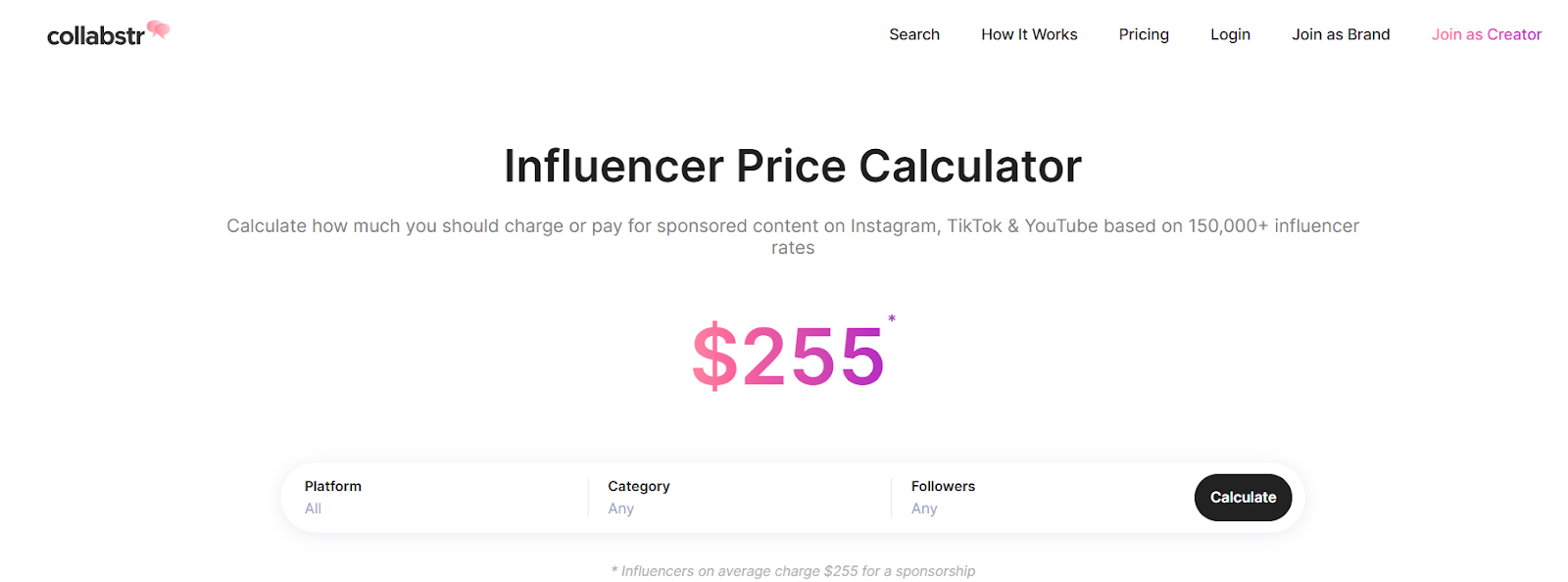
Collabstr is suited to YouTube, Instagram, and TikTok. It is also suited to static content and video content. The ideal customers for this platform are brands and start-ups who are looking for one-off creator deals. With basic performance metrics, including likes, comments, and views, alongside public profiles for creator data, it’s a solid platform.
There is also a manual vetting process with a user-friendly interface. It’s great for those who want to plug and play, with 200,000 influencers currently available.
Key Features:
- Influencer discovery and outreach
- Campaign management with an intuitive dashboard
- Direct messaging and real-time updates
| Pros | Cons |
| User-friendly interface | Fewer customizations for large-scale campaigns |
| Transparent pricing | Not as suited to a large-scale enterprise |
| Clear deliverables | Limited advanced analytics |
Now that we have a better understanding of the tool, let’s look at the 5 best alternatives you should consider.
1. Billo
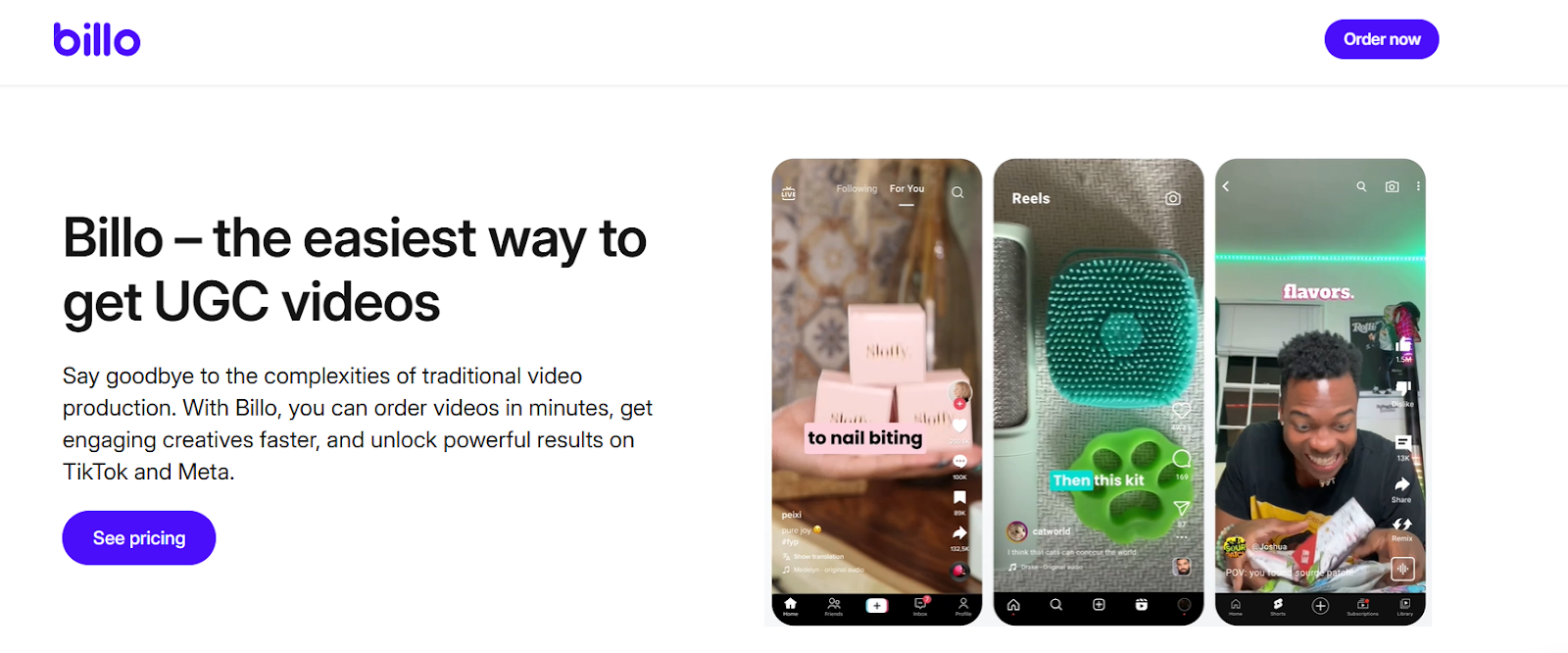
Billo is most suited to short-form videos. It’s tailored for paid ads, particularly with Meta and TikTok.
Ideal for DTC brands and those who need rapid advertisements, it’s certainly a contender for those who want a solid platform with all the functionality of Collabstr. Some of the performance metrics you can access include video engagement stats, CTR and ROAS performance against benchmarks, alongside a breakdown of how your users are interacting with your campaign. With in-house editing also provided, the platform is steadily growing in popularity, and for a very good reason.
Billo goes beyond standard UGC by giving brands data-backed creator videos that are engineered to perform. Every brief, creator match, and edit is powered by insights from 150,000+ ads and $280M in tracked purchase value—so your content starts with proof, not guesswork.
From AI-generated briefs to performance-driven post-production, you get social-ready assets built to win on TikTok, Meta, YouTube, and more. With a network of thousands of vetted creators, Billo helps you launch content that’s not only customized to your brand, but backed by real performance data.
Key Features:
- Data-powered briefs and creator matching
- Customizable video ads for social and paid campaigns
- One streamlined platform from concept to delivery
| Pros | Cons |
| Data-backed creative guidance | Limited to video content only |
| Over 5000 vetted content creators | Less suitable for more complex campaigns |
| Automated insights on current campaigns |
2. Influencity
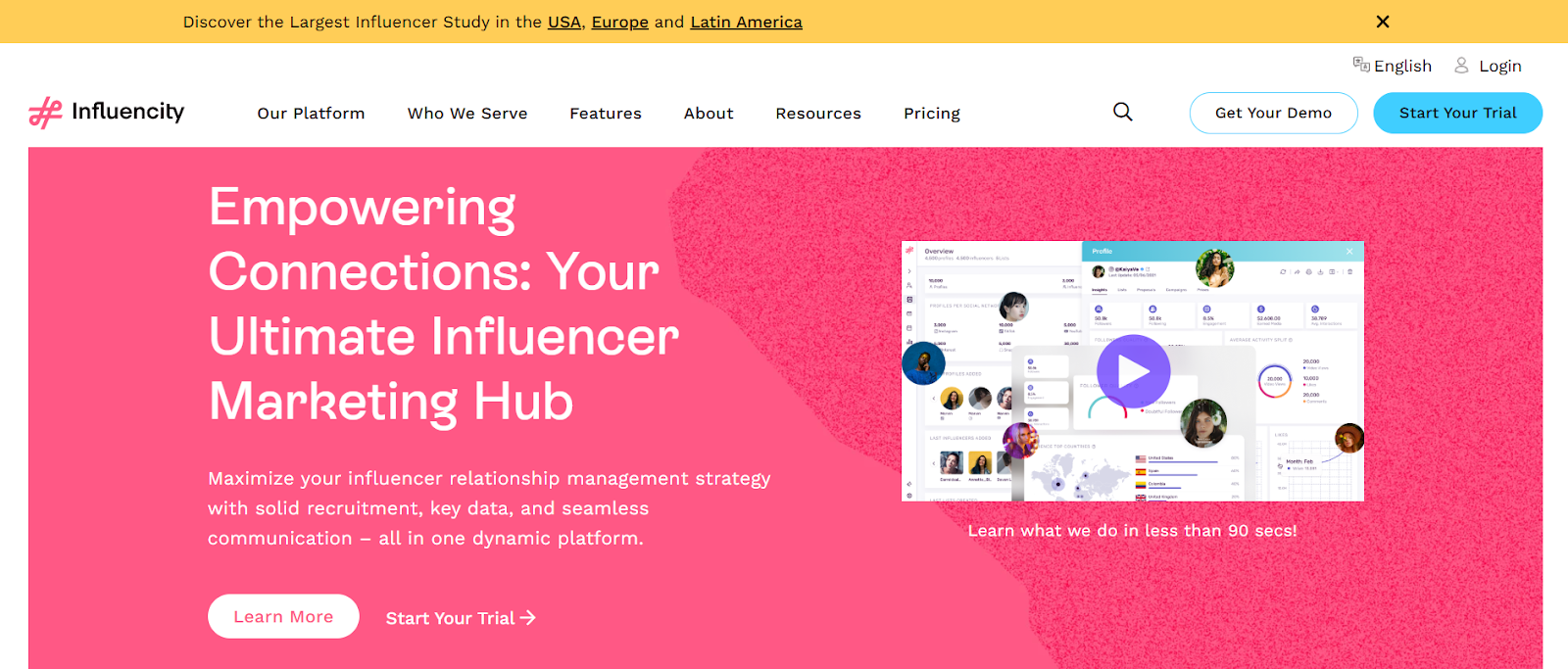
Influencity offers content across multiple platforms. It’s ideal for bigger brands that want to manage a lot of campaigns at once, with numerous performance metrics available to track.
You can track your reach, impressions, engagement, likes, comments, and shares. You can also monitor your CTR rate, meaning that as a brand, you have a lot of options. You can also take advantage of extensive customization filters, along with custom report generation. With access to 200 million influencers, brands can take full control over every aspect of their campaign.
Key Features:
- AI-powered discovery
- Execution and planning for campaigns
- Detailed analytics and reporting
| Pros | Cons |
| Extensive influencer base | Steep learning curve |
| Comprehensive campaign management | Higher pricing compared to other platforms |
| Advanced search filters | Lack of automated content tracking |
Explore more Influencity alternatives
3. Insense
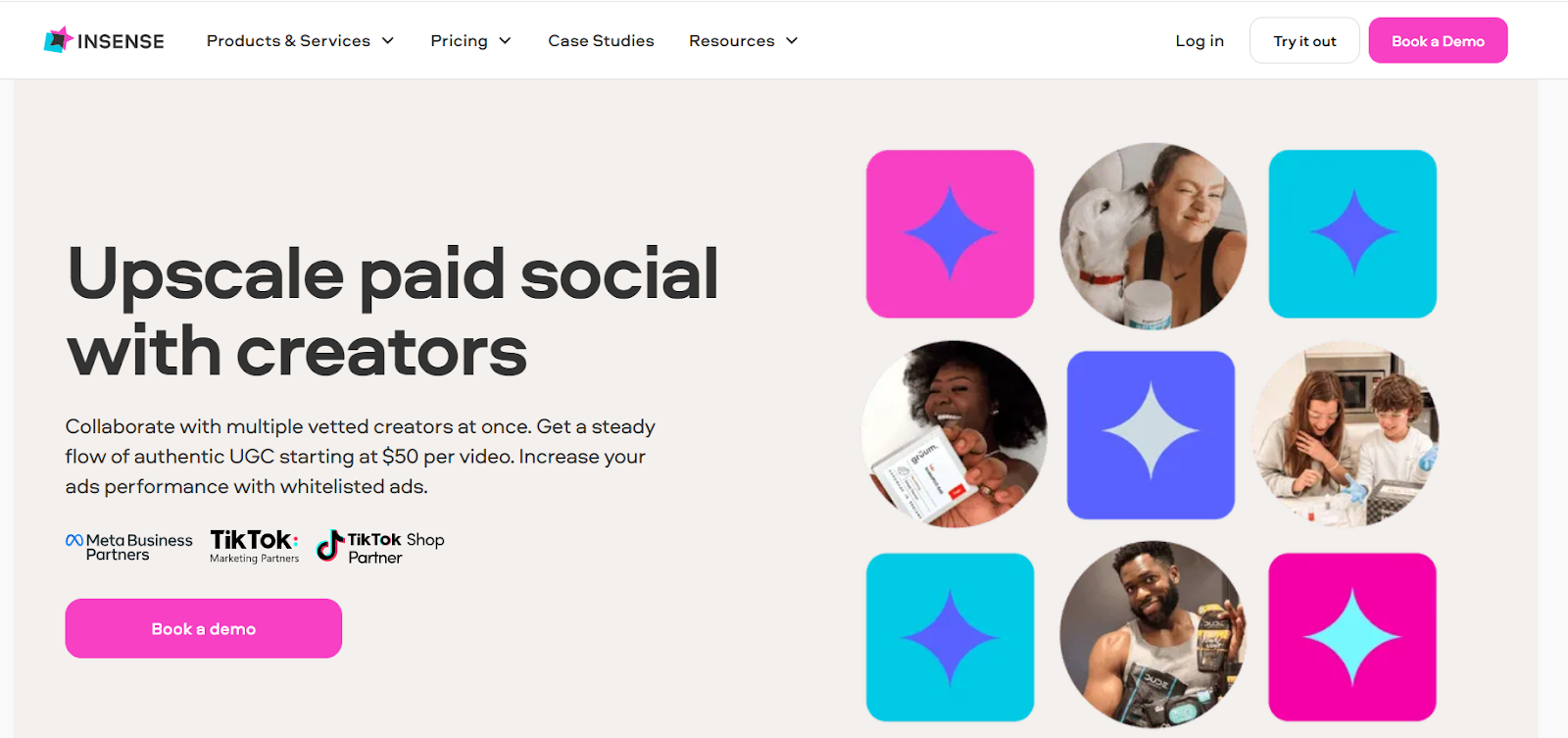
Insense is most suited to those who want UGC that mixes video and other content.
It’s good for performance marketers, with the option to integrate with different ad platforms. Detailed creator profiles and ad performance histories can be accessed in just a few clicks, with the total influencer count currently standing at 68,500.
The platform is especially suited to those who want to scale their campaigns. You can feature UGC from this platform in paid ads to highlight practical use and user satisfaction, making it ideal for those who work in e-commerce.
Key Features:
- Creator licensing for influencer accounts
- Content approval workflow
- Analytics dashboard for tracking key metrics
| Pros | Cons |
| Comprehensive platform with multiple content formats | No free version available |
| Direct chat for seamless communication | Lacks advanced integration |
| Social media platform integration | Mainly catered towards e-commerce brands |
4. JoinBrands
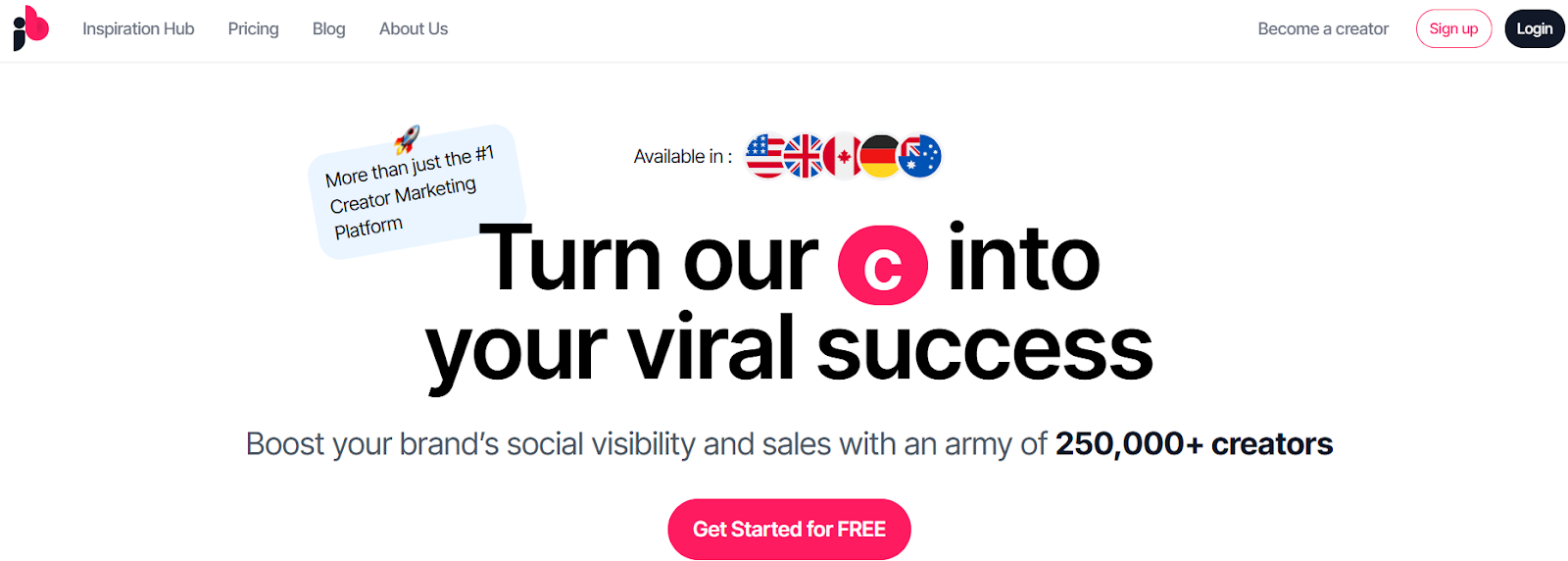
Platforms like JoinBrands are most suited to review-style UGC and are ideal for eCommerce brands, Amazon sellers, and small businesses. It’s also suited to product testers.
There are 10,000 influencers within the network, with extensive brand reach. There are micro, macro, and celebrity influencers across a wide range of industries, with a primary focus on driving brand awareness. Product sampling is included, allowing you to elevate your brand while gaining access to vast audiences in just a few clicks.
Compare JoinBrands with alternatives
Key Features:
- AI-powered matchmaking
- Content approval workflow
- Rights management and fraud detection
| Pros | Cons |
| Extensive content creator network | Additional costs for premium features |
| Flexible pricing and affordable options | Limited flexibility in negotiations |
| Direct communication | Commission fees can add up |
5. Trend IO

Trend IO is ideal for brands that put a focus on chasing viral trends. It’s also suited to Gen Z engagement.
Trend templates are included, as is creator data, including options to sort by performance. According to the latest data, Trend.io has 5,500 content creators within its network, with a waitlist of 15,000 creators. If you’re a brand that wants to gain huge publicity on social media and wants to appeal to a younger audience through creative and diverse marketing campaigns, then look into platforms like Trend IO.
Review Trend.io against the alternatives
Key Features:
- Intuitive creator marketplace
- Numerous campaign management tools
- Content licensing available
| Pros | Cons |
| Streamlined process for managing creators | Smaller content creation network |
| Focus on quality and authenticity | Limited advanced analytics |
| Flexible pricing options | Not as suited to larger campaigns |
Choosing the Right Platform for You
Navigating the world of UGC platforms can be overwhelming, to say the least. There are so many different tools, and each one of the Collabstr alternatives comes with a unique set of features that stand to benefit your campaign. The key is to make sure that you align your platform choice with your specific brand goals, budget, and the type of content you need to create.
1. Understanding your Goals
The first thing you need to do is understand your content goals. Identify the content you intend to create, and work from there.
If your goal is to create quality short-form video ads for TikTok or even Instagram, then Billo or Insense would be a great choice. These are focused on generating fast and in-demand content that’s designed for paid media.
If you want to put more of a focus on generating trend-driven content and want to engage Gen Z audiences, then Trend IO would be a better fit. If product reviews are more your thing and want something focused on pushing your eCommerce store on social media, then JoinBrands is great for that.
2. Depth of Analytics
Analytics play a huge role in shaping your strategy, and they also influence your future campaigns. If your team only needs basic metrics, including views, comments, and likes, Collabstr will probably give you what you need.
If you want more detailed data, including engagement rates, click-through rates, and impressions, then Collabstr alternatives like Billo, Insense, and Influencity will work well. This is especially the case if you want to fine-tune your efforts, so you can gauge how your users are interacting with your content.

3. Creator Network
Lastly, you need to assess the creator network. The size of the network the platform offers can have a huge impact on the success of your campaign. Collabstr has 200,000 influencers across YouTube, Instagram, and TikTok, but if your goal is to run broader influencer campaigns, then Influencity has access to 200 million influencers.
Billo’s curated network is built for quality over quantity, with highly specialized niche creators who can deliver ad content quickly and effectively. JoinBrands is suited to macro and micro-influencers, making it ideal for product launches and review campaigns.
Breaking down information like this will help you determine the best platform for your needs. When you have narrowed down your choice, you can then do direct comparisons, such as between Billo and Insense, so you can make solid and informed choices.
Summary
In conclusion, there are many Collabstr alternatives, and if you follow this guide, you will be able to make a solid choice that goes on to benefit every aspect of your campaign.
There’s no cookie-cutter solution when it comes to choosing a platform, and the one you go with will largely depend on what you’re looking for and what you feel as though you need from your campaign. If you keep this in mind, you’re bound to make the right choice.
FAQs
Below you’ll find the most-asked questions about Collabstr alternatives.
What Collabstr Alternatives Can I Use for Paid Ads?
Billo and Insense are suited to the use of paid ads. They are ideal for brands that want to run UGC across TikTok and various Meta platforms. With that said, the platform you choose will largely come down to what it is you’re looking for and the goals you have.
Which Collabstr Alternative is Best for Campaign Tracking and Analytics?
If you’re looking for deep analytics, Influencity is a great option. With impressions, engagement rates, CTRs, and detailed reports, it’s suited to large-scale campaigns and for those who want to scale rapidly.
As a Small Business, What’s the Best Collabstr Alternative?
If you run a small business, then one of the best Collabstr alternatives would be JoinBrands or Billo. It’s suited to small businesses and e-commerce brands, with affordable pricing. You will also find that it gives you access to macro and micro-influencers, with product sampling support, which helps with review-based content creation.
Which Platform has the Biggest Influencer Network?
Influencity has the biggest influencer network size, with 200 million influencers. Collabstr has 200,000 influencers, and behind that is Insense, with 68,500 influencers. JoinBrands has 10,000 and 25,000 creators, followed by Trend.IO and Billo. When it comes to influencer networks, bigger isn’t always better. Some platforms have manual review processes, meaning you may be able to access higher-quality UGC even though the influencer network is smaller.
Creative Manager
With over 7 years of e-commerce experience, Agne has mastered the balance of creativity and performance. From guiding social media strategies to crafting high-converting ads, she’s all about results.

Authentic creator videos, powered by real performance data
22,000+ brands use Billo to turn UGC into high-ROAS video ads.
Smarter Video Advertising Analytics: 10 Metrics ...
The gap between ad spend and insight is closing – [...]...
Read full articleHow to Create and Execute a UGC Video Marketing ...
Video is one of the most effective ways to connect [...]...
Read full articleBest Alternatives to Influencity
Influencity is a popular platform for managing influencer campaigns, but [...]...
Read full article



